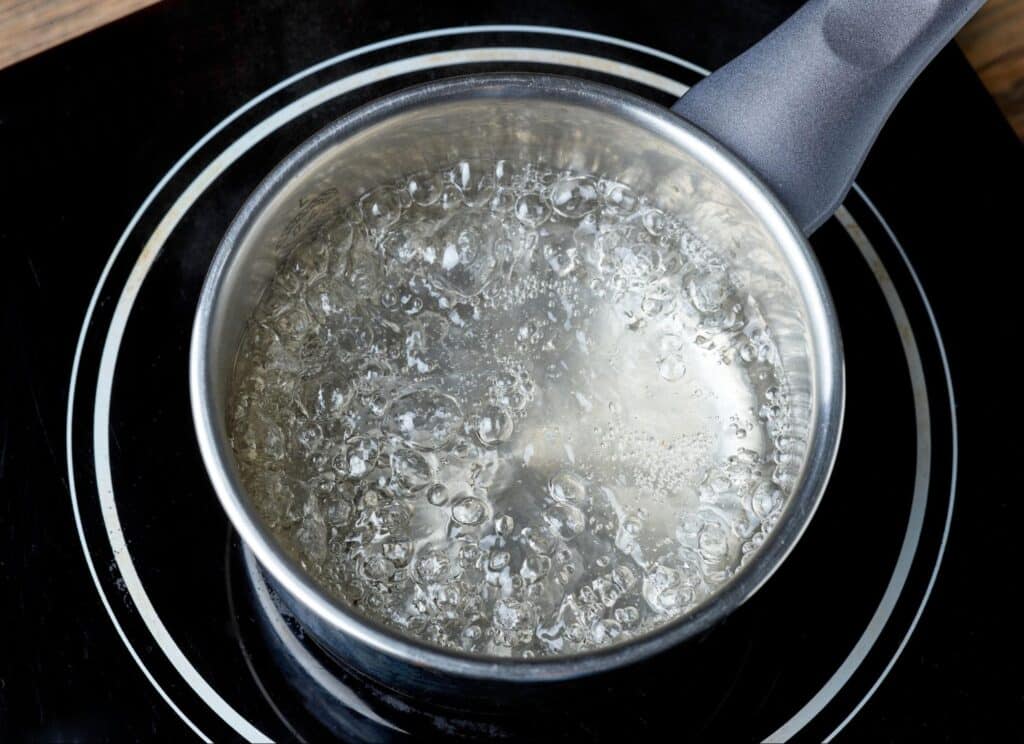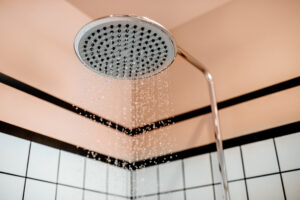A boil water advisory is a critical warning that your tap water may be contaminated and unsafe to use without proper treatment. These alerts are typically issued after events like a water main break, natural disaster, or treatment plant issue compromise the water supply.
Even if your water appears clear, it could contain harmful pathogens like bacteria, viruses, or parasites that can cause significant waterborne illnesses. Knowing how to respond is essential for protecting your health and maintaining safety at home or in your business. This guide explains what a boil water advisory means and the critical steps you should follow before, during, and after one is issued.
Reasons Boil Water Advisories Are Issued
Authorities issue boil water advisories when there is a risk of contamination. Common causes include:
- Compromised Water Lines: Leaks or breaks in compromised water lines can lower system pressure, allowing contaminants to infiltrate the supply.
- Natural Disasters: Natural events such as flooding or hurricanes can overwhelm treatment systems, mixing in debris and pollutants.
- Pressure Loss: Sudden drops in water pressure, whether from maintenance or high demand, may open entry points for contaminants.
- Treatment Facility Failures: Equipment malfunctions or power outages at water treatment plants can lead to improperly treated water.
- Microbial Contamination: Elevated levels of harmful microorganisms, such as E. coli or coliform bacteria, trigger advisories to prevent illness. Ingesting these pathogens can lead to serious waterborne illnesses, with symptoms ranging from nausea, vomiting, and diarrhea to severe abdominal cramps. Common culprits include bacteria like E. coli or coliform bacteria, parasites such as Giardia and Cryptosporidium, and various viruses, all of which pose a significant risk to public health.
In every case, the primary goal is to safeguard public health until testing confirms the water is safe again.
How to Prepare for a Boil Water Advisory
Proper preparation can minimize disruptions. Key steps include:
- Stock Up on Safe Water: Keep a supply of bottled water for drinking, cooking, and hygiene.
- Sanitize Storage Containers: Use clean, food-grade containers; sanitize them with a mild bleach solution before use.
- Turn Off Automatic Ice Makers: Prevent the production of ice from potentially unsafe water, and discard any ice that was made before the advisory.
- Gather and Organize Essential Supplies: Have unscented household bleach, sanitizing wipes, gloves, and lidded containers ready. Keep these items in an accessible location so you can find them quickly in an emergency.
- Establish a Water Usage Plan: Plan alternative workflows for cooking, cleaning, and other water-related activities during the advisory.
- Stay Informed: Sign up for alerts from your local water utility or health department.
Being prepared reduces stress and ensures safety when an advisory is issued.
What to Do Immediately During a Boil Water Advisory

When a boil water advisory is in effect, it is crucial to adjust your daily routines to prevent illness. Follow these consolidated guidelines to keep your household safe.
Drinking and Cooking
Only use water that has been properly treated for all consumption purposes, including drinking, cooking, washing produce, and making beverages.
- Boil Water Correctly: This is the most effective method for killing harmful pathogens. Fill a pot with tap water, bring it to a full rolling boil, and maintain the boil for at least one minute. At altitudes above 6,500 feet, boil for three minutes. Let the water cool completely before storing it in clean, sanitized containers with lids.
- Use Bottled Water: If available, use bottled water as the safest alternative for drinking, cooking, and preparing infant formula.
- Disinfect with Bleach (If Boiling Isn’t Possible): For clear water, add 1/8 teaspoon (about 8 drops) of unscented household bleach per gallon of water. Stir and let it stand for at least 30 minutes before use. If the water is cloudy, filter it through a clean cloth first. A faint chlorine smell indicates it is safe to use.
- Food and Beverage Preparation: Use only boiled, bottled, or disinfected water for washing fruits and vegetables, preparing food, making coffee or tea, and for any recipe that requires water.
- Ice: Discard any ice made from the tap water since the advisory began. Turn off your refrigerator’s automatic ice maker. Make new ice only with boiled or bottled water.
Personal Hygiene (Showering and Handwashing)
Adjust your hygiene practices to avoid accidentally ingesting contaminated water.
- Bathing and Showering: Healthy adults can typically shower or bathe, but be extremely careful to avoid swallowing any water. For young children, infants, or individuals with weakened immune systems, a sponge bath is a safer alternative to reduce the risk of ingestion.
- Handwashing: For general purposes, you can continue to wash your hands with soap and hot tap water. However, if you are about to prepare or serve food, it is best to wash with soap and then rinse your hands using boiled or bottled water. Alternatively, use an alcohol-based hand sanitizer that contains at least 60% alcohol.
- Brushing Teeth: Do not use tap water to brush your teeth. Use boiled or bottled water instead.
Important Considerations for Vulnerable Individuals
While everyone should follow safety guidelines, certain individuals are at a higher risk of severe illness from contaminated water and should take extra precautions:
- Infants and Young Children: Never use untreated tap water to prepare infant formula; always use bottled water or water that has been properly boiled and cooled. For bathing, use a sponge bath to minimize the risk of them swallowing water.
- The Elderly and Immunocompromised Individuals: Those with weakened immune systems (due to illness, medication, or age) are more susceptible to infection. It is crucial for them to strictly adhere to using only boiled or bottled water for drinking and oral hygiene. A sponge bath is also the safest option for bathing.
- Pregnant Women: To avoid any potential risks to both themselves and the fetus, pregnant women should follow the advisory’s guidelines with extra care. If you have specific health concerns, consult a healthcare provider.
Cleaning and Sanitation
Ensure that items that come into contact with food are properly sanitized.
- Washing Dishes: If using a dishwasher, select the sanitizing cycle and ensure the final rinse temperature reaches at least 150°F (66°C). To wash dishes by hand, use hot, soapy water, then rinse them in a separate basin with a solution of one teaspoon of unscented bleach per gallon of water. Allow dishes to air dry completely.
- Cleaning Surfaces: Use hot, soapy tap water to clean tables, countertops, and floors. For extra precaution, you can wipe down food preparation surfaces with a diluted bleach solution afterward.
- Laundry: It is generally safe to do laundry as usual. The combination of soap and high heat in the dryer is sufficient to kill most pathogens.
Caring for Pets
Your pets are also susceptible to waterborne pathogens.
- Provide Safe Drinking Water: Give your pets only boiled (and cooled) or bottled water to drink.
- Clean Food and Water Bowls: Use boiled, bottled, or properly disinfected water when cleaning your pet’s bowls.
Common Myths About Boil Water Advisories: Fact vs. Fiction
During a boil water advisory, misinformation can be dangerous. Here are the facts behind some of the most common myths to ensure you don’t take unnecessary risks.
Myth #1: My refrigerator or pitcher filter makes the water safe.
- Fact: Standard home filters are not designed to remove dangerous pathogens like bacteria and viruses. To ensure safety, you must boil all tap water, even if it has been filtered.
Myth #2: The water looks clear, so it must be fine to drink.
- Fact: Harmful microorganisms are invisible. Water that appears perfectly clear can still be dangerously contaminated. Never judge water safety by its appearance during an advisory.
Myth #3: Just heating the water until it’s hot is good enough.
- Fact: Hot tap water is not hot enough to kill germs. Water must reach a full, rolling boil for at least one minute to be considered safe for consumption.
Myth #4: Boiling works for any type of contamination, including chemical spills.
- Fact: Boiling only kills biological contaminants (germs). It does not remove chemical toxins like lead or pesticides and can actually increase their concentration. A “Do Not Drink” advisory would be issued for chemical threats.
What to Do When a Boil Water Advisory Is Lifted

Once authorities lift the advisory, follow these steps to fully restore your water system:
- Flushing your plumbing system: Open all cold-water faucets and allow the water to run until it appears clear and reaches a consistent temperature.
- Clean Appliances: Flush and clean water-using appliances such as ice makers, refrigerators, and coffee machines. Discard any ice and run several batches to clear the system.
- Replace Water Filters: Replace filters in refrigerators, faucets, and pitchers to remove any residual contaminants.
- Inspect Water Heaters and Toilets: Drain and refill water heaters if needed, and flush toilets to remove older water.
- Check Water Quality: After flushing, inspect the water for clarity and odor. If problems persist, contact your local water utility or a trusted plumber.
- Clean Outdoor Fixtures: Run outdoor spigots and hoses to remove stagnant water from external plumbing.
These steps help ensure that your water supply is safe and fully restored.
Preparing for Long-Term or Frequent Boil Water Advisories
In areas prone to advisories, long-term readiness is key. To prepare effectively:
- Monitor Your Water System: Be alert to sudden pressure drops or changes in water clarity and color, as these can be early indicators of a system issue.
- Schedule Routine Plumbing Inspections: Regular professional assessments can identify and address vulnerabilities in your plumbing system before they lead to contamination risks.
- Maintain a Stockpile: Keep a long-term supply of bottled water, invest in reliable water filtration systems certified for pathogen removal, and maintain a basic water safety kit.
- Develop an Emergency Plan: Ensure everyone in your household knows the plan for an extended water outage or advisory.
These proactive measures can fortify your water system, reduce downtime, and simplify your response when advisories occur.
How a Professional Plumber Can Help
While following safety protocols during a boil water advisory is essential for immediate protection, a professional plumber can address the underlying causes and help ensure your system is safe for the long term. Expert plumbing services are key to preventing future issues and restoring confidence in your water supply.
Here’s how a professional plumber provides critical support:
- Emergency Plumbing Repairs: Issues like burst pipes or main line breaks often trigger boil water advisories. A plumber can provide 24/7 emergency services to locate and fix the source of the problem, minimizing contamination risks and helping to restore safe water service more quickly.
- Preventative Maintenance and Inspections: Regular inspections can identify vulnerabilities such as aging pipes or potential leaks before they fail. This proactive approach helps maintain the integrity of your water system and prevents the pressure drops that can lead to contamination.
- Advanced Repair Solutions: Using modern methods like trenchless pipe repair, professionals can fix compromised water lines efficiently with minimal disruption to your property, ensuring a durable and secure solution.
- Post-Advisory System Flushing: After an advisory is lifted, a plumber can help you properly flush your entire plumbing system, including pipes, water heaters, and fixtures, to ensure no residual contaminants remain.
- Support for Commercial and Municipal Systems: Professional plumbers offer tailored services for larger, more complex systems to ensure they remain compliant with health standards and operate reliably, protecting employees, customers, and the public.
By partnering with a trusted plumbing expert like Hydromax Plumbing, you can move from a reactive response to a proactive strategy, safeguarding your vital water supply and gaining peace of mind.
Ensuring Safe Water for Your Home and Business
Boil water advisories are challenging but essential safeguards against waterborne contaminants. By boiling tap water for at least one minute (or three minutes at higher altitudes), disinfecting with bleach when necessary, and using bottled water for critical tasks, you can reduce the risk of illness and protect your household, business, and industrial facility.
Hydromax Plumbing is here to support you with professional inspections, emergency services, and preventative maintenance. Trust our experienced team to help you maintain a safe, reliable water supply.
Take proactive steps to secure your water system and ensure peace of mind. Contact Hydromax Plumbing today for expert assistance and safeguard your vital water resources.




